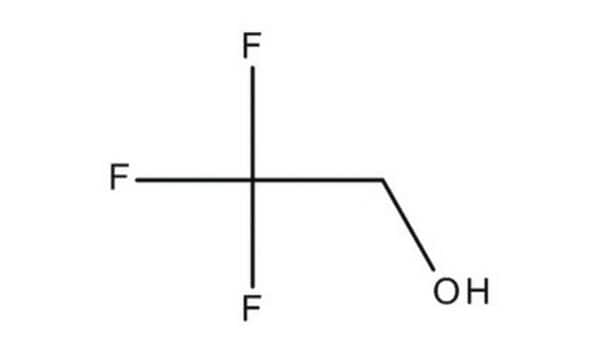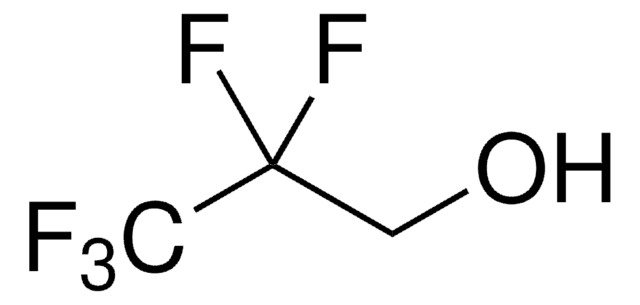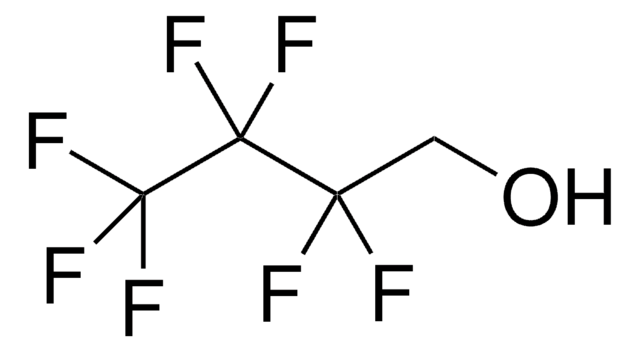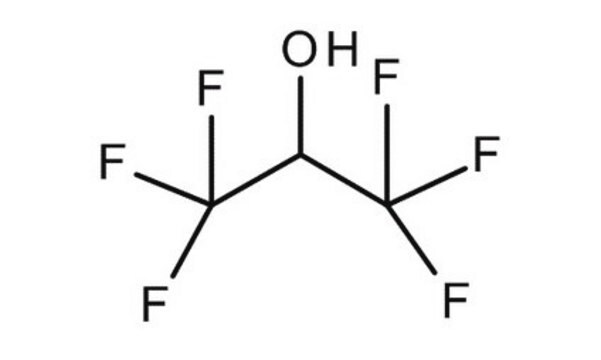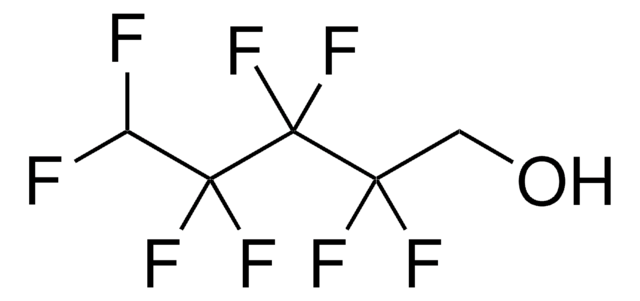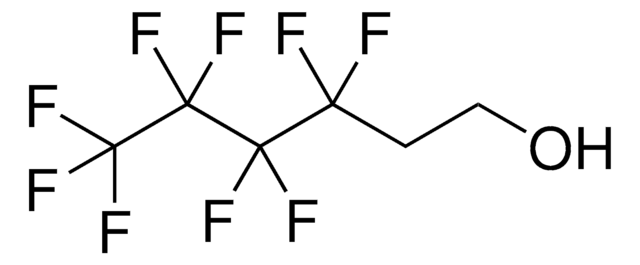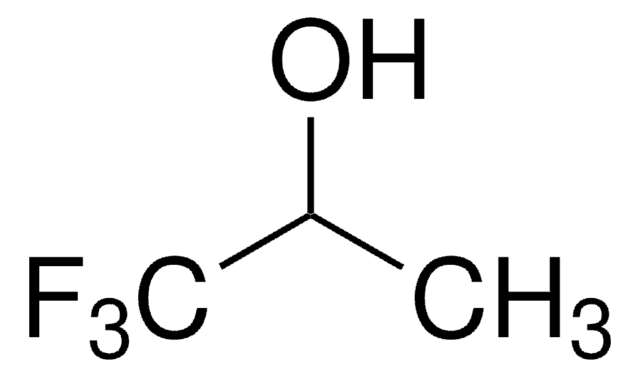T63002
2,2,2-Trifluoroethanol
ReagentPlus®, ≥99%
Sinonimo/i:
Trifluoroethyl alcohol
About This Item
Prodotti consigliati
Densità del vapore
3.5 (vs air)
Tensione di vapore
70 mmHg ( 25 °C)
Nome Commerciale
ReagentPlus®
Saggio
≥99%
Forma fisica
liquid
Temp. autoaccensione
~896 °F
Limite di esplosione
42 %
Indice di rifrazione
n20/D 1.3 (lit.)
pH
7
P. eboll.
77-80 °C (lit.)
Punto di fusione
−44 °C (lit.)
Densità
1.373 g/mL at 25 °C (lit.)
Stringa SMILE
OCC(F)(F)F
InChI
1S/C2H3F3O/c3-2(4,5)1-6/h6H,1H2
RHQDFWAXVIIEBN-UHFFFAOYSA-N
Cerchi prodotti simili? Visita Guida al confronto tra prodotti
Descrizione generale
Applicazioni
- In the synthesis of 2-amino-3-cyano-4H-chromene and tetrahydrobenzo[b]pyran derivatives by catalyst free one-pot condensation of aldehydes, malononitrile and resorcinol or dimedone.
- In the N-formylation of amines with formic acid in the presence of heterogeneous ZIF-8 (zeolitic imidazolate framework) catalyst.
- In the preparation of 2-substituted-2,3-dihydro-4(1H)-quinazolinone derivatives by condensation of anthranilamide with alkyl, aryl, or heteroaryl ketones or aldehydes.
- In the mild and selective oxidation of sulfur compounds using H2O2(hydrogen peroxide).
Caratteristiche e vantaggi
Note legali
Avvertenze
Danger
Indicazioni di pericolo
Consigli di prudenza
Classi di pericolo
Acute Tox. 3 Inhalation - Acute Tox. 3 Oral - Eye Dam. 1 - Flam. Liq. 3 - Repr. 1B - STOT RE 2 Inhalation
Organi bersaglio
Blood
Codice della classe di stoccaggio
3 - Flammable liquids
Classe di pericolosità dell'acqua (WGK)
WGK 1
Punto d’infiammabilità (°F)
86.0 °F - closed cup
Punto d’infiammabilità (°C)
30 °C - closed cup
Certificati d'analisi (COA)
Cerca il Certificati d'analisi (COA) digitando il numero di lotto/batch corrispondente. I numeri di lotto o di batch sono stampati sull'etichetta dei prodotti dopo la parola ‘Lotto’ o ‘Batch’.
Possiedi già questo prodotto?
I documenti relativi ai prodotti acquistati recentemente sono disponibili nell’Archivio dei documenti.
Il team dei nostri ricercatori vanta grande esperienza in tutte le aree della ricerca quali Life Science, scienza dei materiali, sintesi chimica, cromatografia, discipline analitiche, ecc..
Contatta l'Assistenza Tecnica.